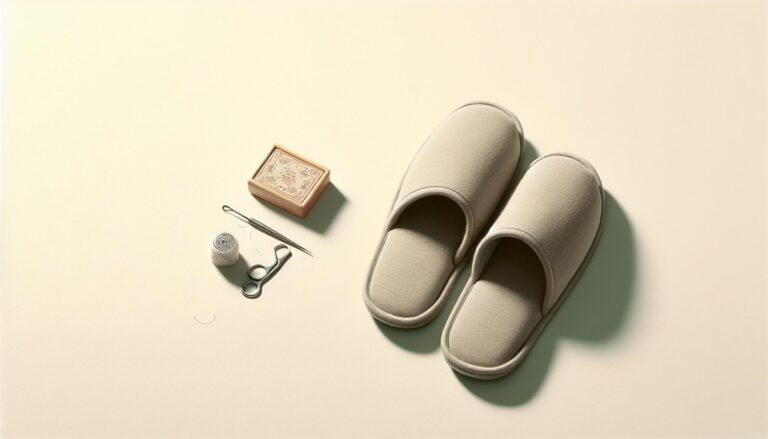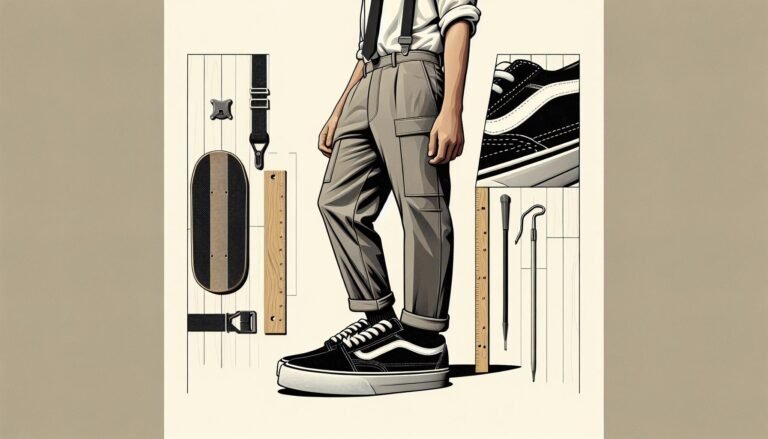Are Converse Shoes Good for Daily Wear? Comfort & Care Tips
Converse shoes have been a cultural icon for decades, gracing the feet of everyone from rock stars to everyday folks like me. But beyond their timeless style, I’ve often wondered: are they actually good for my feet?
With their minimalist design and flat soles, Converse sneakers offer a unique fit that’s distinctly different from the cushioned support found in modern athletic shoes. I’ve done the legwork to explore whether these popular kicks stand up to the demands of our daily grind.
As someone who’s always on the move, I know the importance of wearing footwear that’s not just fashionable, but also functional. So, let’s dive into the world of Converse and see if they’re as kind to our feet as they are to our style sensibilities.
The Cultural Icon of Converse Shoes
There’s no denying that Converse sneakers have carved out a unique niche in fashion and culture. From the basketball courts of the past to the bustling streets of today, these classic shoes have donned the feet of athletes, musicians, artists, and anyone attracted to their timeless appeal. The Chuck Taylor All-Stars, or simply ‘Chucks’, have become synonymous with a rebellious spirit, often worn by those who stand out from the crowd and speak their minds.
The ubiquity of Converse can be traced back to their versatility. They’re a blank canvas for self-expression, coming in a spectrum of colors and styles that suit virtually any personal style. Whether it’s the vintage black and white high-tops or the limitless array of custom designs, there’s something deeply personal about picking out a pair of Converse.
- Athletes first popularized Converse shoes for their functional design in basketball.
- In the music scene, they became the emblem of rock and roll thanks to iconic bands like The Ramones.
- The art world embraced them because they were affordable and became a part of the artist’s minimalist aesthetic.
Through these scenes, Converse have represented more than just footwear; they’re a form of identity. Even with countless shoe technologies and styles emerging, they’ve managed to remain relevant. As I delve further into their history, I find it fascinating how Converse has maintained this cultural stronghold for over a century.
Yet, amidst this celebration of their cultural impact, I’m curious about the practicality of these sneakers today. They’ve ridden the wave of fashion, but foot health and comfort are paramount for daily wear. In the next section, I’ll dig into whether the construction of Converse shoes meets the functional demands of our feet or if their popularity is riding solely on the back of nostalgia and style.
The Minimalist Design and Flat Soles of Converse Sneakers
Converse sneakers sport a minimalist design that’s stood the test of time; they feature a simple canvas upper and a flat rubber sole. While they’re a fashion staple, it’s essential to discuss whether this design is beneficial for foot health.
First off, the shoes’ flat soles are a double-edged sword. They can provide a stable surface for your feet, which is great for activities that need balance, like skateboarding or lifting weights. However, I’ve learned that for those with specific foot conditions, such as flat feet or plantar fasciitis, the lack of arch support can exacerbate pain and discomfort.
The canvas material, while highly durable and flexible, doesn’t offer much in the way of foot support either. It’s lightweight and breathable, which is perfect for casual use and warm days, but it won’t give you the structured support that more athletic footwear can provide.
Think about the insole of a Converse shoe — it’s typically quite thin. I’ve found that the cushioning is minimal, which means that while it might not be an issue for a quick jaunt to the store, it might not be the best for long-standing hours or intense physical activity.
Let’s talk customizability. The simplicity of Converse sneakers makes them an excellent canvas (pun intended) for orthopedic insoles. If you need that extra support, swapping out the insole for something more substantial is an easy fix. But remember, not all insoles will work with the slim profile of Converse shoes, so you’ll have to choose wisely.
Overall, the minimalist design of Converse sneakers means fewer elements that could potentially cause problems, but it also means less built-in support for your feet. It’s important to weigh these factors based on personal needs and how you plan to use the shoes. As such, while they’re a cultural icon with unquestionable aesthetic appeal, their suitability as a go-to footwear option for foot health might require a bit of customization.
Exploring the Fit and Support of Converse Shoes
As I delve deeper into the world of footwear, I find the fit and support of Converse shoes to be a topic of great interest to my readers. Considering their iconic design, it’s essential to understand how they stack up in terms of comfort and overall foot well-being.
One of the primary considerations when assessing the fit of any footwear is size compatibility. Converse sneakers tend to run large, so it’s wise to go a half-size down for that snug fit. But when we talk about foot support, the scenario gets a bit more complex. Converse shoes offer a rather uniform shoe width, which might not be ideal for those with wider feet.
- Always measure your feet before purchasing
- Consider going a half-size down for a better fit
- Examine the width for adequate comfort, especially if you have wide feet
The canvas material, though lightweight and breathable, doesn’t provide much by way of lateral support. This could be a downside for activities that require a lot of side-to-side movement, increasing the potential for rolling one’s ankles. That said, the simple lace-up design does ensure a level of adjustability and a secure fit around the instep.
So, what about the inside of the shoe? The flat rubber sole that’s characteristic of Converse may contribute to stability, but it lacks in the cushioning department. This can lead to discomfort during extended periods of wear, especially on hard surfaces.
Thankfully, the minimalist interior space can be optimized with aftermarket solutions:
- Insert orthopedic insoles to enhance arch support
- Opt for slim profile insoles that accommodate the tight fitting of Converse sneakers
- Pick insoles with extra cushioning for improved shock absorption
By addressing the internal space of the shoe, I can significantly enhance the level of comfort and support without compromising on style. It’s a simple tweak that can extend the wearability of Converse shoes for a wider range of activities and foot types. The key lies in selecting the right type of insoles that complement the iconic minimalism of Converse sneakers while addressing their inherent support limitations.
The Functionality of Converse Shoes for Everyday Use
When considering the everyday functionality of Converse shoes, it’s important to look at their versatility. Known for their timeless design, these sneakers easily transition from casual outings to more dressy casual events. Their minimalistic style means they can be paired with a wide range of outfits, from jeans and a tee to summer dresses. This adaptability makes them a go-to choice for those seeking a single pair of shoes that can cover most bases.
Durability is another key factor in their day-to-day use. The sturdy canvas and rubber soles are built to withstand regular wear, which means I don’t have to worry about them giving out after just a few outings. However, it’s worth noting that while they’re durable, the lack of cushioning in the sole may lead to quicker perception of wear when used on harder surfaces for prolonged periods.
For active individuals, it’s crucial to consider how Converse sneakers hold up under physical strain. The simple construction doesn’t offer the detailed ergonomic support found in athletic shoes, making them less suitable for high-impact activities. For day-to-day walking and moderate use, they can serve well, but it’s best to switch to specialized footwear for workouts or extensive walking tours.
Moreover, in terms of climate adaptability, Converse shoes aren’t waterproof. This means they might not be the ideal choice for rainy days or in environments where water and mud are common. For sunny weather or indoor activities, they’re a fantastic and stylish option.
In care and maintenance, Converse sneakers score high. The canvas material is easy to clean and maintains its appearance with minimal effort. A simple wipe down or a gentle cycle in the washing machine keeps these shoes looking fresh and ready for my next adventure.
Customization is a lesser-known but delightful aspect of Converse shoes. With various lacing techniques and the option to add colorful inserts or unique laces, I can personalize my pair to reflect my style or mood, keeping my everyday look unique and vibrant.
Conclusion
Wrapping it up, I’ve found that Converse shoes strike a balance between style and functionality. They’re not your go-to for intense workouts, but they’ll support you through your daily grind with ease. Their customizability is a huge plus, letting you express your personal style. Just remember, they’re not fans of water, so keep an eye on the forecast. With proper care, your Converse can be a long-lasting addition to your wardrobe. Whether you’re out for a casual stroll or dressing up, these sneakers have got your back—or rather, your feet.




[…] know the difference to avoid being scammed. This article will provide useful tips to help identify authentic Converse sneakers and avoid purchasing counterfeit […]